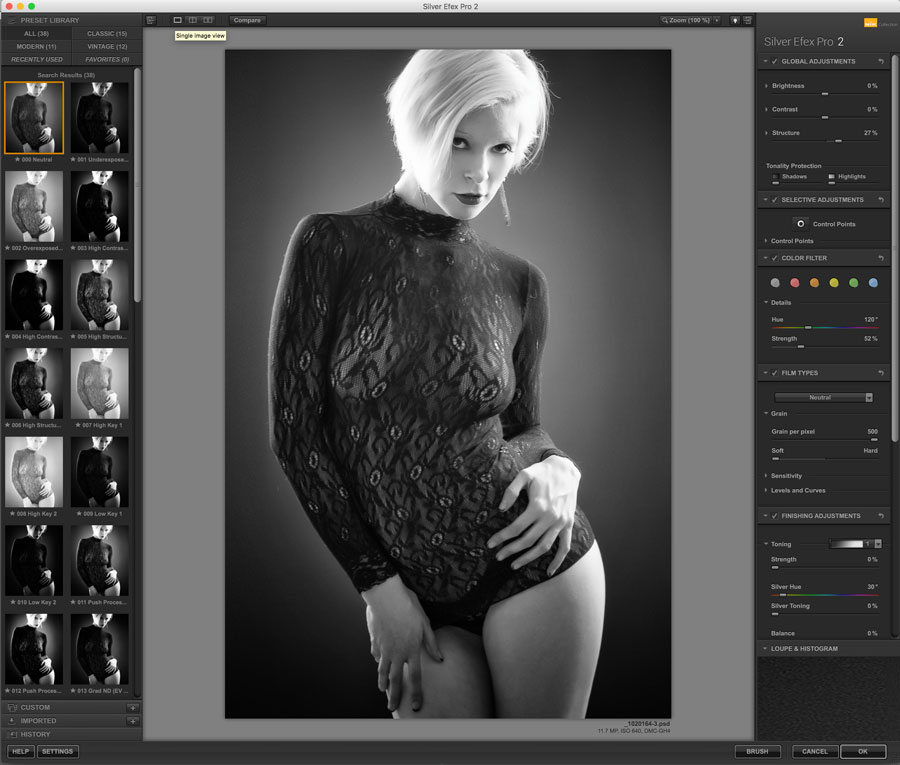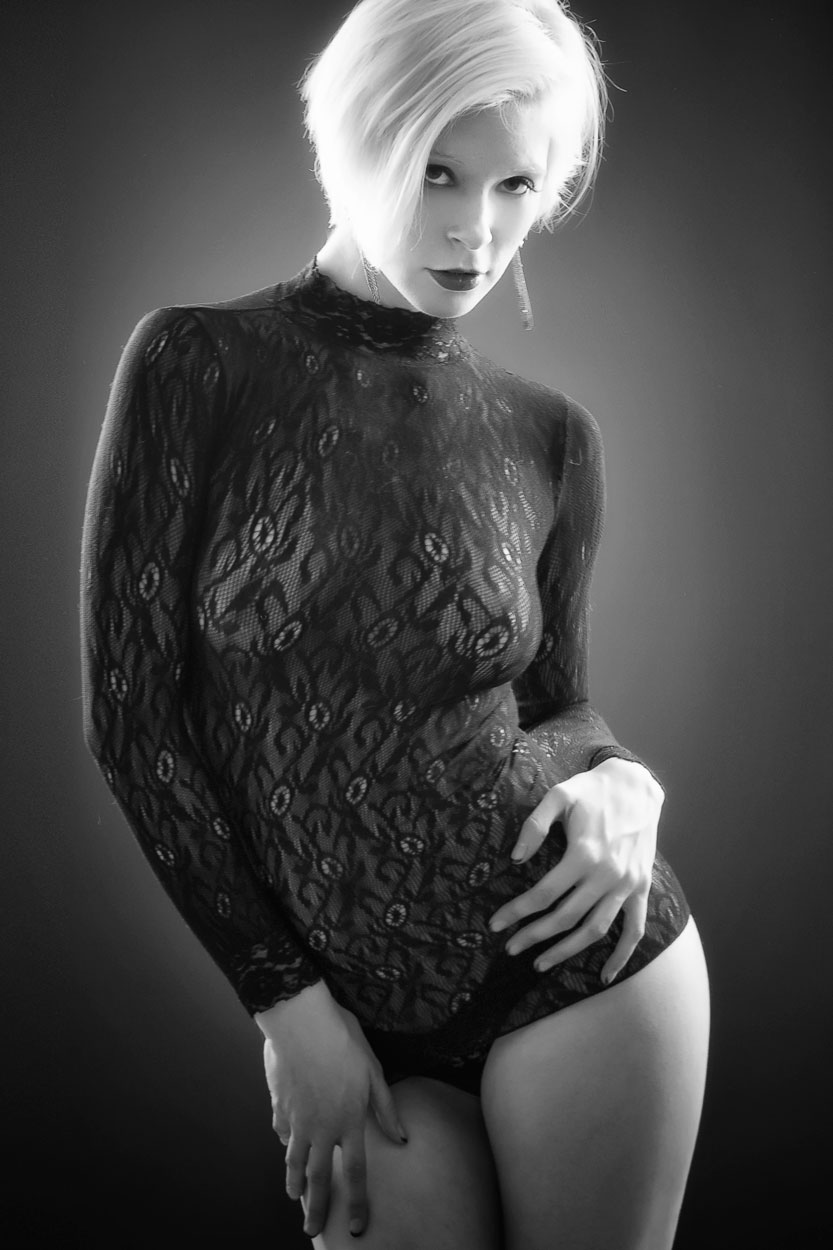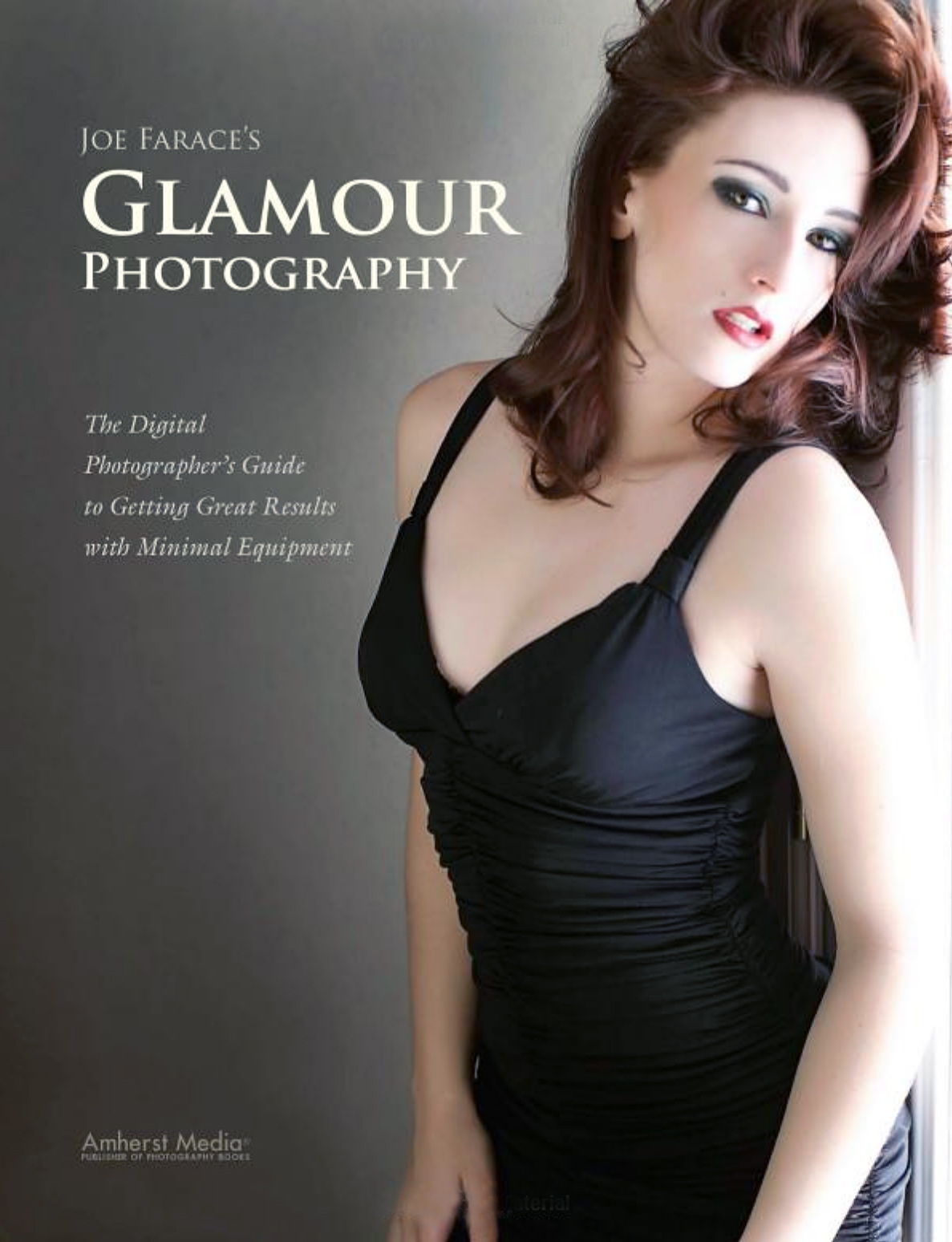Today’s Post by Joe Farace
“I work in color sometimes, but I guess the images I most connect to, historically speaking, are in black and white. I see more in black and white – I like the abstraction of it.” – Mary Ellen Mark
 There’s more to black and white photography than just a lack of color. As a creative medium, traditionalists may call it “monochrome” while digital imagers prefer “grayscale” but to paraphrase Billy Joel, “it’s still black and white to me.”
There’s more to black and white photography than just a lack of color. As a creative medium, traditionalists may call it “monochrome” while digital imagers prefer “grayscale” but to paraphrase Billy Joel, “it’s still black and white to me.”
Black and white is a wonderful media for making boudoir or intimate portraits because the lack of color immediately simplifies the image, causing you to focus on the portrait’s true subject —their face—instead of their clothing or surroundings. And sometimes the nature of the portrait subject demands the image be photographed in black and white. It’s hard to imagine Arnold Newman’s1946 portrait of Igor Stravinsky in anything but black and white.
 There are also the trendy aspects of monochrome photography that are often associated with creating images in black and white. TV, movies and the remaining fashion magazines periodically rediscover black and white as a way to present images that are different from what’s currently being shown. Right now, many portrait and boudoir photographers tell me they’re seeing a higher than normal demand for monochrome images than was previously was the case.
There are also the trendy aspects of monochrome photography that are often associated with creating images in black and white. TV, movies and the remaining fashion magazines periodically rediscover black and white as a way to present images that are different from what’s currently being shown. Right now, many portrait and boudoir photographers tell me they’re seeing a higher than normal demand for monochrome images than was previously was the case.
How I made this shot: I made this portrait of Pam Simpson when she was deep into what I called her “Kim Novak” period and I’ve long been a huge fan of Ms. Novak. And Ms. Simpson herself was one of the most influential muses to my photography that I have been lucky enough to work with. The portrait was shot in my 11×15-foot home studio using a Panasonic Lumix GH4 and a Leica DG Macro-Elmarit 45mm f/2.8 lens with an exposure of 1/30 sec at f/4 and ISO 640. Lighting for the portrait was was made with Westcott’s Two-Light Daylight D5 Softbox kit (that has been replaced by their uLite LED 2-Light Collapsible Softbox Kit.) For this shot, I placed the main light with a 24×32-inch softbox mounted at camera right with the second light sans softbox behind the subject. Backdrop is a Savage Infinity vinyl black backdrop that was hung from JTL background stands.
When making what would become monochrome images in the studio, I prefer to shoot the original image with the camera set in monochrome mode while using the camera’s RAW+JPEG option. This produces two files: one color RAW file and one monochrome JPEG that I just use to show the subject approximately what the final image will look like. Because there are so many more tones in the color file it’s easier to use for retouching. And after retouching, I use different monochrome conversions tools including Silver Efex to convert the final image to black & white, as I did here.
 If you enjoyed today’s blog post and would like to buy Joe a cup of Earl Grey tea ($3.50), click here. And if you do, thank you very much.
If you enjoyed today’s blog post and would like to buy Joe a cup of Earl Grey tea ($3.50), click here. And if you do, thank you very much.
My book Joe Farace’s Glamour Photography is full of tips, tools and techniques for glamour and boudoir photography with new copies available from Amazon for $21.87, as I write this. Used copies are starting at the hard-to-beat price price of $8.8 and the Kindle version is $19.99 for those who prefer a digital format.